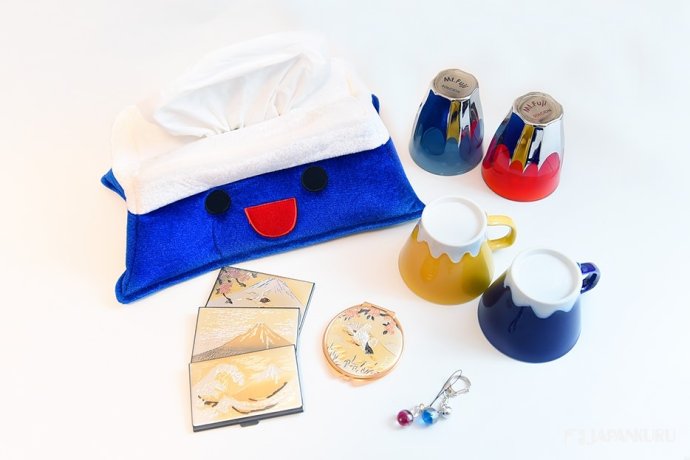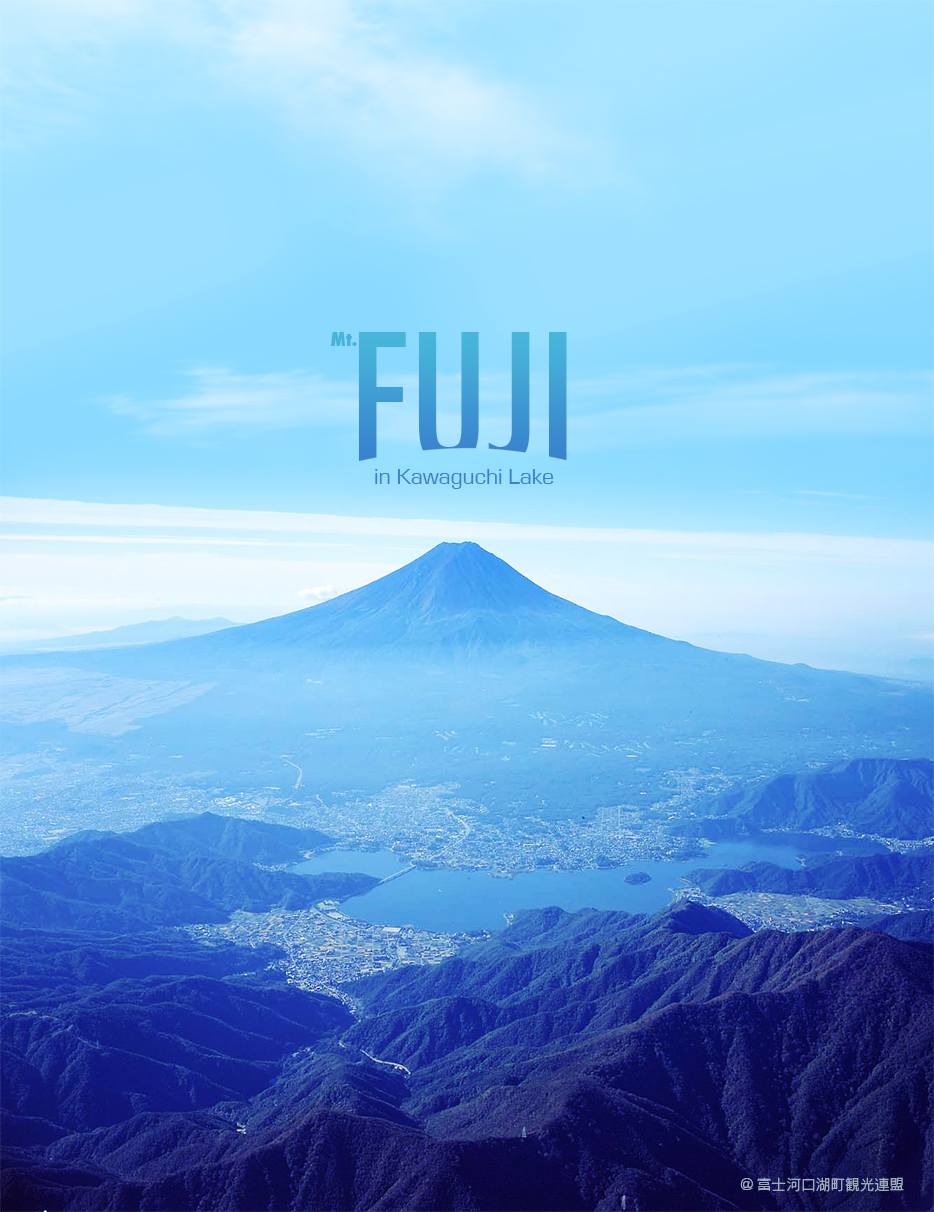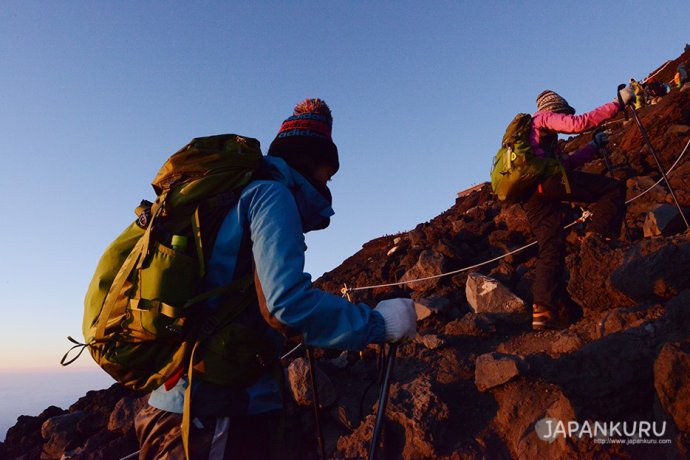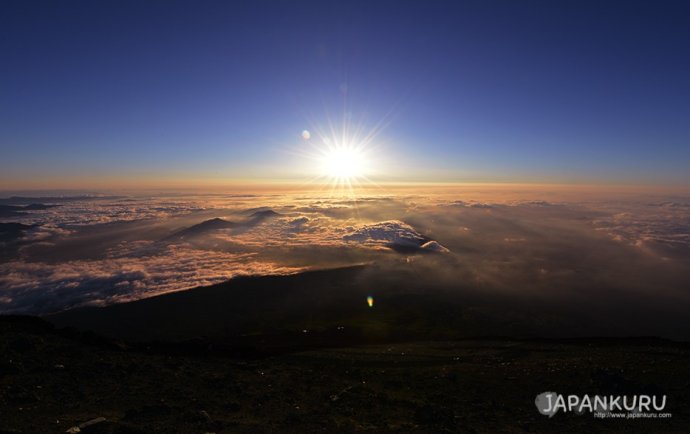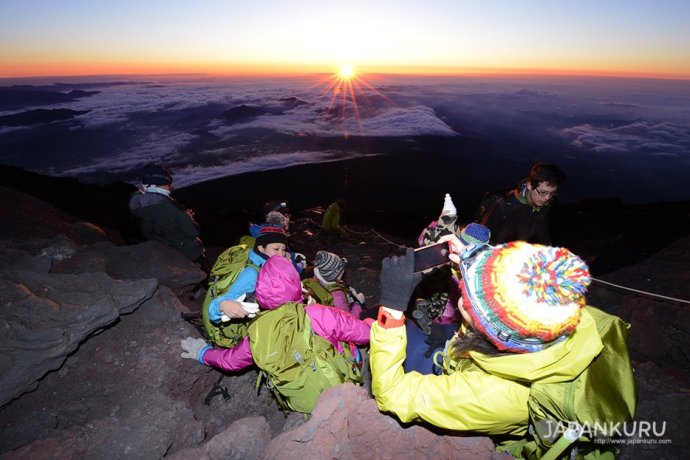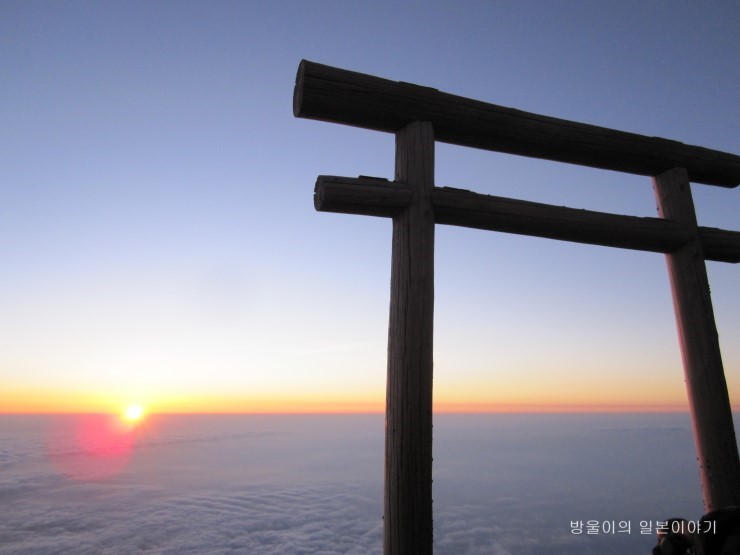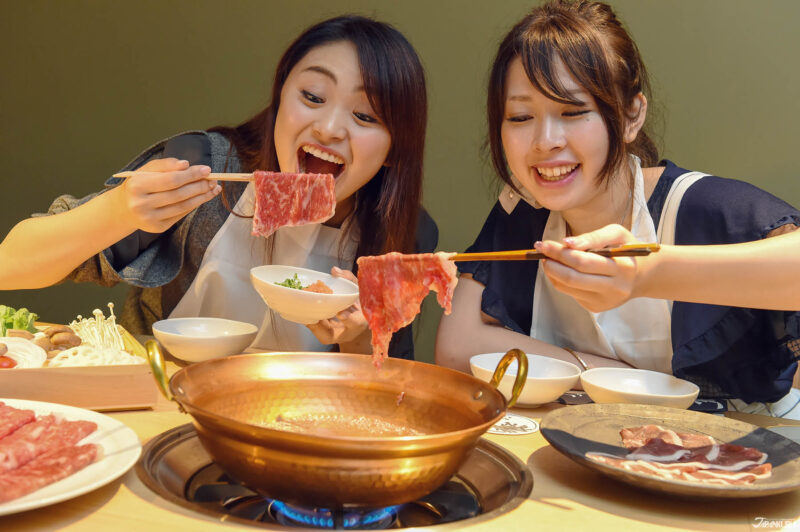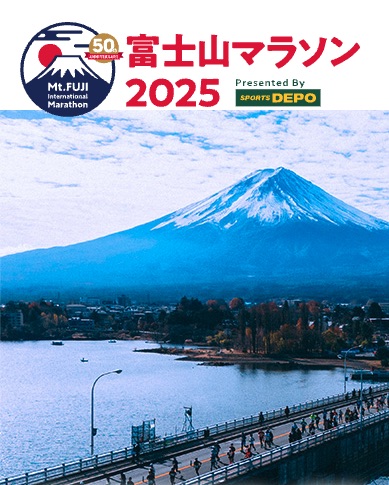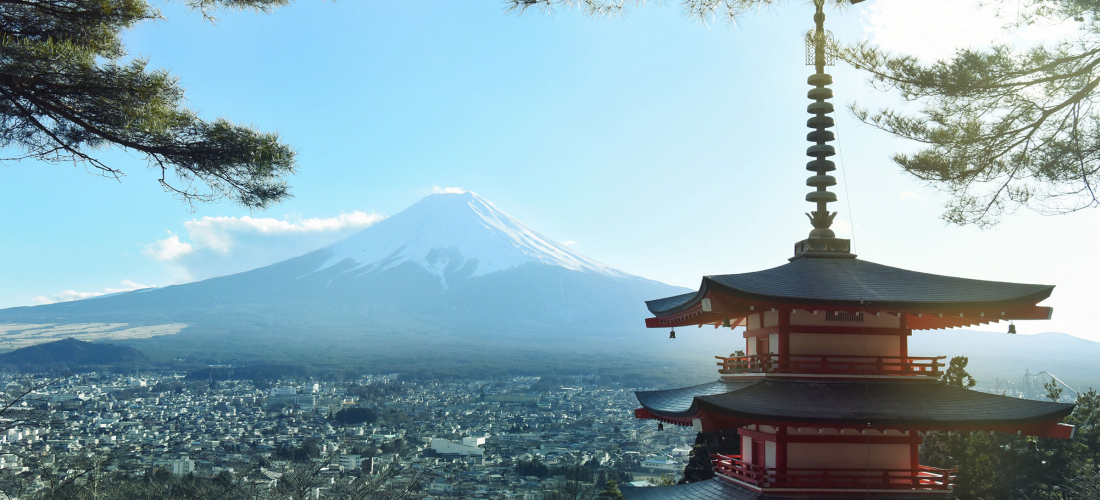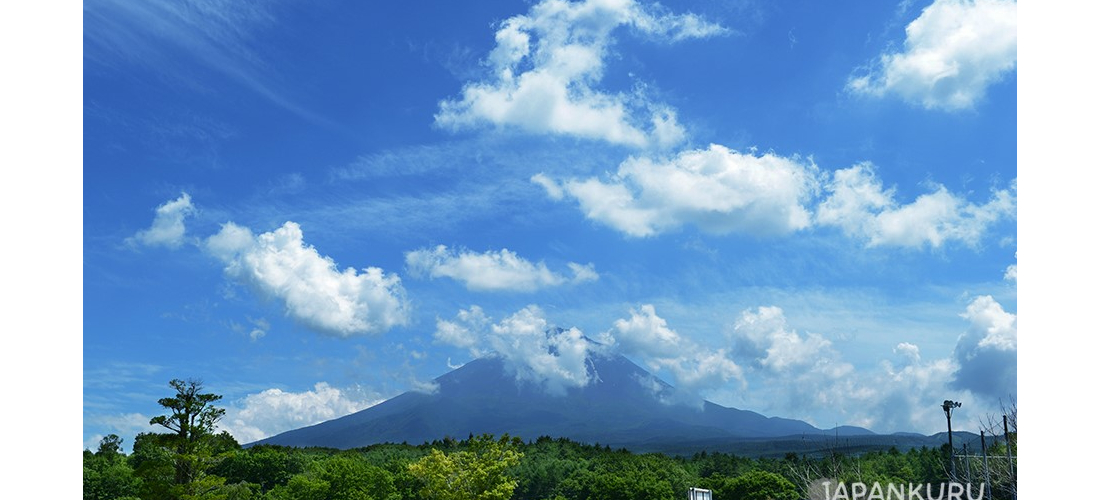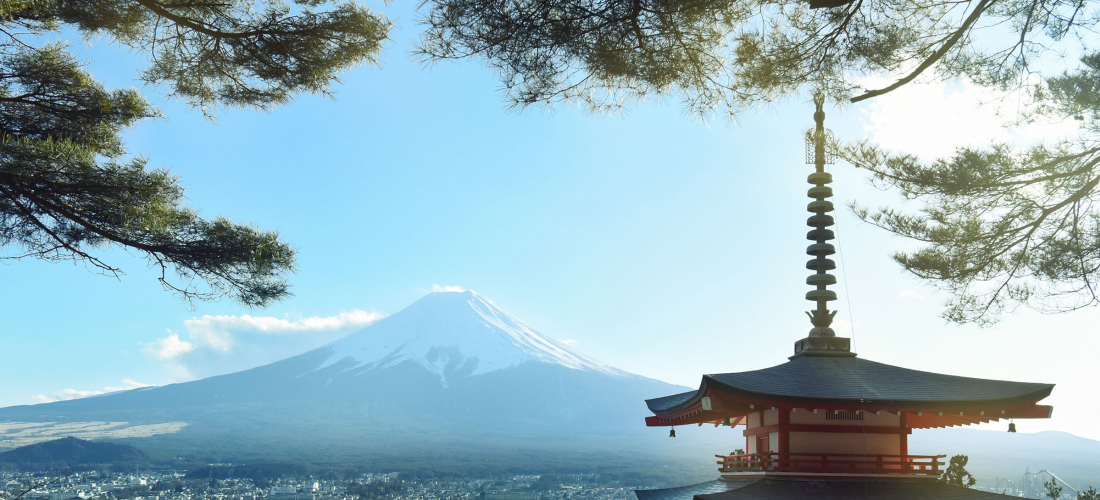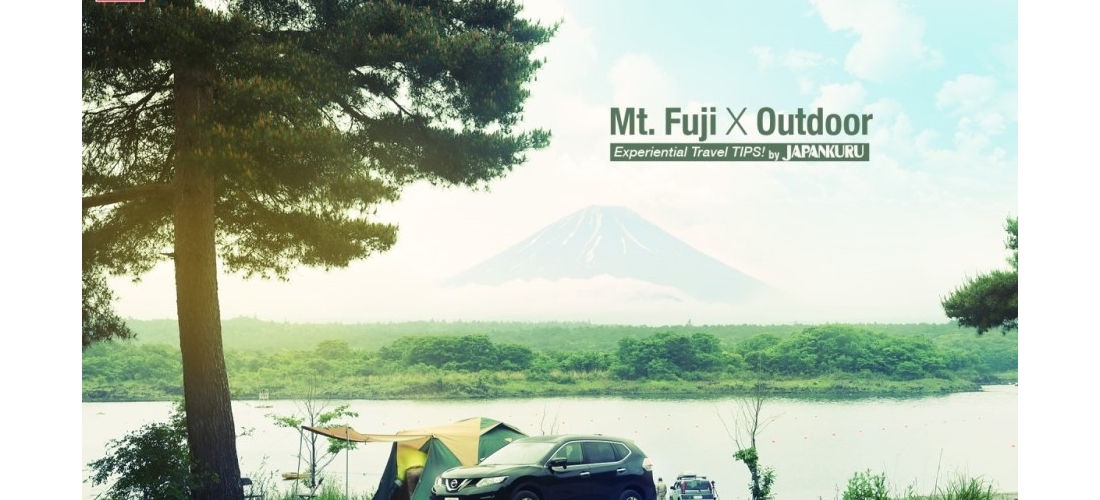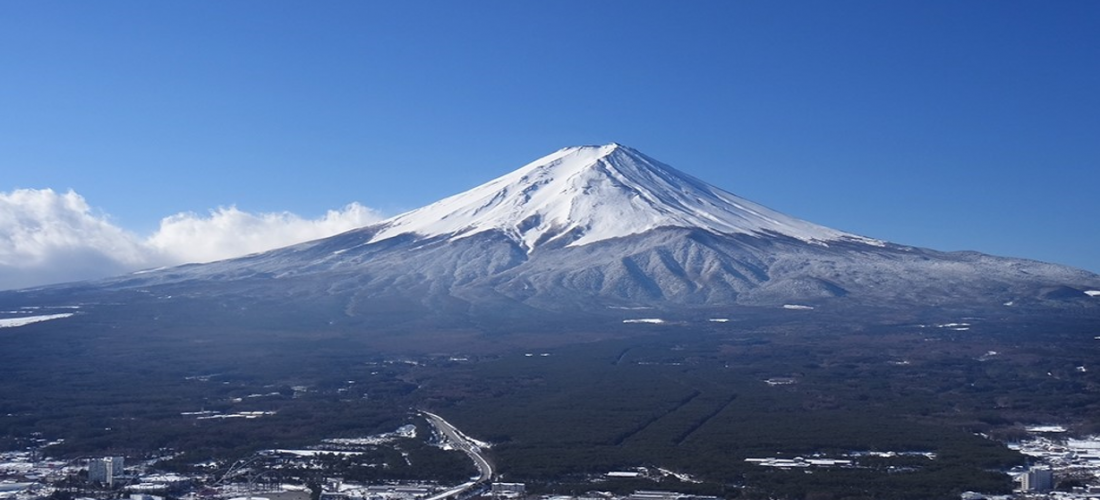
CONTENTS
Mount Fuji (or \”Fuji-san\” in Japanese) stands tall between Shizuoka Prefecture and Yamanashi Prefecture, and is an active volcano with an altitude of 3776 meters (that’s just over 2 miles!). The whole area of Mt. Fuji is designated as a national park in order to protect such special and precious natural environment.
A 12,388 ft (3,776 m) Above Sea Level Sleeping Volcano
The Japanese see it as the heart of their country. The Chinese characters (kanji) used for Fuji are 富, (fu) meaning wealth, enrich, or abundant and 士(ji) means 'gentlemen' (can often be seen used with professions such as lawyers, soldiers, sumo wrestlers, pilot, etc.). Just by characters alone, you can see the Japanese admiration for Mount Fuji.
*Hokusai’s “Thirty-six Views of Mount Fuji” (image reference from network)
Mt. Fuji Decorated Goods
The Forever Love for Mt. Fuji
Since ancient times, Mount Fuji has always been regarded as the source of inspiration for artistic creation, Matsuo Basho has also written a lot of description of Mount Fuji haiku. The most famous, of course, is the ukiyo-e painting done by the artist Katsushika Hokusai "Thirty-six Views of Mount Fuji". Hokusai brought life and realization into exactly how much a symbol Mount Fuji really is to the Japanese. Mount Fuji is alive and present in each one of the woodblock prints. This painting style has influenced many world-class painters, even to this day. Mount Fuji continues to be the element of the creation in a variety of decorations, works of art, and goods. Traditional looking jewelry boxes to cute Mount Fuji stuffed animals, Mount Fuji is a never ending muse.
On June 22, 2013 Mount Fuji became included in the World Heritage sites! Earlier the artistic enthusiasm was mentioned, but what some don't know is that in the 12th century Mount Fuji became the center of training for ascetic Buddhism, which included Shinto elements. So it's almost a given that Mount Fuji would be included. Mount Fuji really is an inspirational force for Japan artistically and spiritually.
More and more this view of nature and culture has been recognized by the international community, making it their dream to one day climb.
Mountain Climbing Gear👷
∴Hiking boots, rainwear, cold protection, a head lamp, hat, sports drink, camera, mobile phone
*recommends: towels, toilet paper, plastic bags*
There are restrooms on the trails, but some don't have toilet paper and you aren't allowed to flush it. Why the plastic bags though? Because there aren't trash cans -_-;
Climbing Season🗻
Mount Fuji 2017 Climbing Time
∴From Yamanashi (Yoshida Trail) Prefecture July 1st~Sept 14th
∴From Shizuoka Prefecture (Subashiri, Gotemba, and Fujinomiya Trail) July 10th~September 10th
The Four trails are color-coded with respective colors indicated on signs because each is different in its own way:
✥ Yoshida Trail (Yellow Route)
Most people who climb Mount Fuji take the Yoshida Trail. It starts at the Fuji-Subaru Line 5th Station and leads to the summit from the north side of Mt. Fuji in Yamanashi Prefecture. At the 8th Station junction, many people accidently turn right taking them on the red trail (Subashiri). So keep an eye out for that!
*Has many shops, emergency areas, bathrooms etc.
✥ Subashiri Trail (Red Route)
By climbing the Subashiri (red) Trail, you can watch the most beautiful sunrise! The Subashiri Trail leads to the summit from the east side of Mt. Fuji in Shizuoka Prefecture (Oyama Town). You have to walk through dark forests and there are no emergency centers on this trail, so PLEASE be sure to have a headlight/flashlight with you!!!
*Only has 2 shops and bathrooms
✥ Gotemba Trail (Green Route)
This trail is suitable for good walkers who deal with a large altitude difference and long distance up to the summit (is the longest trail out of the four, taking estimated 7 hours to climb). There are also few bathrooms, huts, and no emergency areas, which makes it have the fewest number of people to actually use this route.
✥ Fujinomiya Trail (Blue Route)
The distance to the summit is super short because this trail starts at the highest altitude out of the four trails, making it quite crowded.
*Has one shop, info center, and bathroom
BEFORE CLIMBING
❶ Be aware that the price according to different locations is different, 200 yen to 300 yen range.
② Women, if you are on your monthly cycle, please bring your own sealed bags and replacement physical care products as needed. Sanitary products can't be flushed in the toilet, so we're afraid you need to put them in a sealed bag to take home with you.
❸ Pay attention to temperature/weather. It isn't uncommon to get altitude sickness, so if you feel unwell please take a break.
④ There are mountain huts for those who climb Mount Fuji have a place to rest. Anyone can go to the hut on the mountain to rest, eat, and have a short break.
Other information below
::Climbing Fuji Official Website – READ BEFORE::
2017 Mt. Fuji’s Latest Information
This is something recent that came available within the last year to make things more convenient and means of disaster support for Japanese and foreign travelers. KDDI also hopes by introducing this multilingual guide support it will increase number of climbers because it supports safe and trouble-free climbing.
As Fujisan Wi-Fi also supports Wi2's TRAVEL JAPAN Wi-Fi app for foreign visitors to Japan, by downloading the app and agreeing to the terms of use, foreign visitors can use Fujisan Wi-Fi access points to automatically connect to Wi-Fi.
It's just too good to be true!
You can get Fujisan Wi-Fi during the climbing season.
Here is much more detailed information explaining where, how to connect, eligibility, etc.
::Fujisan Wi-Fi English::
Please click on JAPANKURU to check out our official blog
Be sure to look at JAPANKURU🐶 for more exciting articles every day!!
Details
MAP
Kitayama, Fujinomiya, Shizuoka Prefecture
COMMENT
FEATURED MEDIA
VIEW MORE 
A New Tokyo Animal Destination: Relax & Learn About the World’s Animals in Japan
#pr #japankuru #anitouch #anitouchtokyodome #capybara #capybaracafe #animalcafe #tokyotrip #japantrip #카피바라 #애니터치 #아이와가볼만한곳 #도쿄여행 #가족여행 #東京旅遊 #東京親子景點 #日本動物互動體驗 #水豚泡澡 #東京巨蛋城 #เที่ยวญี่ปุ่น2025 #ที่เที่ยวครอบครัว #สวนสัตว์ในร่ม #TokyoDomeCity #anitouchtokyodome

Shohei Ohtani Collab Developed Products & Other Japanese Drugstore Recommendations From Kowa
#pr #japankuru
#kowa #syncronkowa #japanshopping #preworkout #postworkout #tokyoshopping #japantrip #일본쇼핑 #일본이온음료 #오타니 #오타니쇼헤이 #코와 #興和 #日本必買 #日本旅遊 #運動補充能量 #運動飲品 #ช้อปปิ้งญี่ปุ่น #เครื่องดื่มออกกำลังกาย #นักกีฬา #ผลิตภัณฑ์ญี่ปุ่น #อาหารเสริมญี่ปุ่น

도쿄 근교 당일치기 여행 추천! 작은 에도라 불리는 ‘가와고에’
세이부 ‘가와고에 패스(디지털)’ 하나면 편리하게 이동 + 가성비까지 완벽하게! 필름카메라 감성 가득한 레트로 거리 길거리 먹방부터 귀여움 끝판왕 핫플&포토 스폿까지 총집합!
Looking for day trips from Tokyo? Try Kawagoe, AKA Little Edo!
Use the SEIBU KAWAGOE PASS (Digital) for easy, affordable transportation!
Check out the historic streets of Kawagoe for some great street food and plenty of picturesque retro photo ops.
#pr #japankuru #도쿄근교여행 #가와고에 #가와고에패스 #세이부패스 #기모노체험 #가와고에여행 #도쿄여행코스 #도쿄근교당일치기 #세이부가와고에패스
#tokyotrip #kawagoe #tokyodaytrip #seibukawagoepass #kimono #japantrip

Hirakata Park, Osaka: Enjoy the Classic Japanese Theme Park Experience!
#pr #japankuru #hirakatapark #amusementpark #japantrip #osakatrip #familytrip #rollercoaster #retrôvibes #枚方公園 #大阪旅遊 #關西私房景點 #日本親子旅行 #日本遊樂園 #木造雲霄飛車 #히라카타파크 #สวนสนุกฮิราคาตะพาร์ค

🍵Love Matcha? Upgrade Your Matcha Experience With Tsujiri!
・160년 전통 일본 말차 브랜드 츠지리에서 말차 덕후들이 픽한 인기템만 골라봤어요
・抹茶控的天堂!甜點、餅乾、飲品一次滿足,連伴手禮都幫你列好清單了
・ส่องมัทฉะสุดฮิต พร้อมพาเที่ยวร้านดังในอุจิ เกียวโต
#pr #japankuru #matcha #matchalover #uji #kyoto #japantrip #ujimatcha #matchalatte #matchasweets #tsujiri #말차 #말차덕후 #츠지리 #교토여행 #말차라떼 #辻利抹茶 #抹茶控 #日本抹茶 #宇治 #宇治抹茶 #日本伴手禮 #抹茶拿鐵 #抹茶甜點 #มัทฉะ #ของฝากญี่ปุ่น #ชาเขียวญี่ปุ่น #ซึจิริ #เกียวโต

・What Is Nenaito? And How Does This Sleep Care Supplement Work?
・你的睡眠保健品——認識「睡眠茶氨酸錠」
・수면 케어 서플리먼트 ‘네나이토’란?
・ผลิตภัณฑ์เสริมอาหารดูแลการนอน “Nenaito(ネナイト)” คืออะไร?
#pr #japankuru #sleepcare #japanshopping #nenaito #sleepsupplement #asahi #睡眠茶氨酸錠 #睡眠保健 #朝日 #l茶胺酸 #日本藥妝 #日本必買 #일본쇼핑 #수면 #건강하자 #네나이토 #일본영양제 #อาหารเสริมญี่ปุ่น #ช้อปปิ้งญี่ปุ่น #ร้านขายยาญี่ปุ่น #ดูแลตัวเองก่อนนอน #อาซาฮิ

Japanese Drugstore Must-Buys! Essential Items from Hisamitsu® Pharmaceutical
#PR #japankuru #hisamitsu #salonpas #feitas #hisamitsupharmaceutical #japanshopping #tokyoshopping #traveltips #japanhaul #japantrip #japantravel

Whether you grew up with Dragon Ball or you just fell in love with Dragon Ball DAIMA, you'll like the newest JINS collab. Shop this limited-edition Dragon Ball accessory collection to find some of the best Dragon Ball merchandise in Japan!
>> Find out more at Japankuru.com! (link in bio)
#japankuru #dragonball #dragonballdaima #animecollab #japanshopping #jins #japaneseglasses #japantravel #animemerch #pr

This month, Japankuru teamed up with @official_korekoko to invite three influencers (originally from Thailand, China, and Taiwan) on a trip to Yokohama. Check out the article (in Chinese) on Japankuru.com for all of their travel tips and photography hints - and look forward to more cool collaborations coming soon!
【橫濱夜散策 x 教你怎麼拍出網美照 📸✨】
每次來日本玩,是不是都會先找旅日網紅的推薦清單?
這次,我們邀請擁有日本豐富旅遊經驗的🇹🇭泰國、🇨🇳中國、🇹🇼台灣網紅,帶你走進夜晚的橫濱!從玩樂路線到拍照技巧,教你怎麼拍出最美的夜景照。那些熟悉的景點,換個視角說不定會有新發現~快跟他們一起出發吧!
#japankuru #橫濱紅磚倉庫 #汽車道 #中華街 #yokohama #japankuru #橫濱紅磚倉庫 #汽車道 #中華街 #yokohama #yokohamaredbrickwarehouse #yokohamachinatown

If you’re a fan of Vivienne Westwood's Japanese designs, and you’re looking forward to shopping in Harajuku this summer, we’ve got important news for you. Vivienne Westwood RED LABEL Laforet Harajuku is now closed for renovations - but the grand reopening is scheduled for July!
>> Find out more at Japankuru.com! (link in bio)
#japankuru #viviennewestwood #harajuku #omotesando #viviennewestwoodredlabel #viviennewestwoodjapan #비비안웨스트우드 #오모테산도 #하라주쿠 #日本購物 #薇薇安魏斯伍德 #日本時尚 #原宿 #表參道 #japantrip #japanshopping #pr

Ready to see TeamLab in Kyoto!? At TeamLab Biovortex Kyoto, the collective is taking their acclaimed immersive art and bringing it to Japan's ancient capital. We can't wait to see it for ourselves this autumn!
>> Find out more at Japankuru.com! (link in bio)
#japankuru #teamlab #teamlabbiovortex #kyoto #kyototrip #japantravel #artnews
Photos courtesy of teamLab, Exhibition view of teamLab Biovortex Kyoto, 2025, Kyoto ® teamLab, courtesy Pace Gallery

Japanese Makeup Shopping • A Trip to Kamakura & Enoshima With Canmake’s Cool-Toned Summer Makeup
#pr #canmake #enoshima #enoden #에노시마 #캔메이크 #japanesemakeup #japanesecosmetics

⚔️The Robot Restaurant is gone, but the Samurai Restaurant is here to take its place. Check it out, and don't forget your coupon!
🍣신주쿠의 명소 로봇 레스토랑이 사무라이 레스토랑으로 부활! 절찬 쿠폰 발급중
💃18歲以上才能入場的歌舞秀,和你想的不一樣!拿好優惠券去看看~
#tokyo #shinjuku #samurairestaurant #robotrestaurant #tokyotrip #도쿄여행 #신주쿠 #사무라이레스토랑 #이색체험 #할인이벤트 #歌舞伎町 #東京景點 #武士餐廳 #日本表演 #日本文化體驗 #japankuru #japantrip #japantravel #japanlovers #japan_of_insta

Japanese appliance & electronics shopping with our KOJIMA x BicCamera coupon!
用JAPANKURU的KOJIMA x BicCamera優惠券買這些正好❤️
코지마 x 빅 카메라 쿠폰으로 일본 가전 제품 쇼핑하기
#pr #japankuru #japanshopping #kojima #biccamera #japaneseskincare #yaman #dji #osmopocket3 #skincaredevice #日本購物 #美容儀 #相機 #雅萌 #日本家電 #일본여행 #면세 #여행꿀팁 #일본쇼핑리스트 #쿠폰 #일본쇼핑 #일본브랜드 #할인 #코지마 #빅카메라 #japankurucoupon


